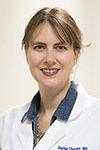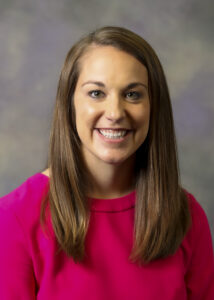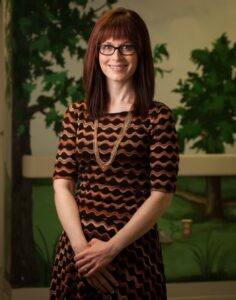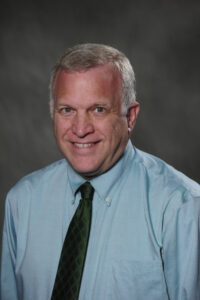The COVID-19 pandemic has challenged every part of the world we live in and especially for you, the physicians on the front lines. A few of our members have shared their personal reflections on their experience. They are included below.
Member Contributors
Sana Habib, MD, FAAP
Rachel Charney, MD, FAAP
Beth Garrett, MD, FAAP
Cassidy Leonard-Scott, DO, FAAP
Stuart Sweet, MD, FAAP
Sana Habib, MD, FAAP 
I am a pediatric hospitalist, working in St. Louis, Missouri. My scope of practice includes pediatric inpatient, pediatric emergency medicine, and nursery. During March 2020, fear and anxiety of this impending pandemic settled in my community in St. Louis, MO as we saw the dire situation unfold in New York. How COVID-19 affected the healthcare system in my local community was not what I anticipated. Initially, there was heightened anxiety among physicians, nurses, patients and other healthcare workers at the hospital.
Given that there was limited knowledge regarding the infectivity of COVID-19, hospital guidelines and recommendations as well as outside of the hospital were rapidly changing—day to day, hour by hour. In addition to a daily flood of emails regarding COVID-19, I would also hear about its devastating consequences on the radio while driving to work and also see it on the news after work. Like so many others, my thoughts and feelings were preoccupied with COVID-19 to the point of exhaustion.
There was a fear of not only contracting the virus, but also being responsible for spreading the virus to our loved ones given that we are front-line workers. We carried the heavy responsibility if our grandparents, parents, or children became ill from the virus. There were rapid changes made in the hospital setting as we prepared for the pandemic. Contingency plans were made for us as pediatricians to care for adults within certain criteria, in the case that our colleagues caring for adults were overwhelmed. We prepared for limited PPE and COVID-19 testing supplies. Guidelines were instilled on personal protective equipment use and testing under certain circumstances.
In actuality, gratefully, we did not experience an influx of admissions due to COVID-19 in the pediatric population as anticipated. The opposite occurred—our volumes rapidly decreased in the emergency department and inpatient setting. My suspicion is that this is due in part to the fear of being exposed in the hospital and the effect of social distancing, as it is effective for a multitude of infectious diseases.
During my first year as an attending, I am experiencing uneasiness that I would not have anticipated as a physician—uncertainty of my career. Healthcare workers from all over the nation were furloughed or terminated due to the financial effect the pandemic has had on the healthcare system, including my colleagues practicing in different parts of the country. I worry about what this means for future physicians in light of hiring freezes in many hospitals and practices all over the nation.
While I am thankful that the pediatric population has not been as deeply affected by this virus, I hope that we, as pediatricians, will have the opportunity to continue to provide quality care to children in the community.
 Rachel Charney, MD, FAAP
Rachel Charney, MD, FAAP
As the Medical Director for Disaster Preparedness for my hospital, SSM Cardinal Glennon Children’s Hospital, and a Missouri AAP Chapter Representative for Disaster Preparedness, I have focused my career on improving the resiliency of children and their families during and after disasters. Regardless, COVID-19 has presented my hospital with a challenge that we have not previously dealt with, nor could ever be fully prepared for. The novel nature of this virus has required us to be nimble, and to develop a cohesive communication stream that will benefit us from years to come.
Due to the nature of my academic work, I was a participant early in the disaster response of my hospital system. As it became more clear that children were not the primary victims of this virus, we prepared our hospital to assist our sister hospitals serving adults. This required us to think outside the box–how to bring the adult expertise we would need to our hospital while respecting the taxing workload our adult colleagues were experiencing. How to allow two separate emergency departments to function as a single unit. While our hospital did not ever need to offload the surge to our adult facilities, we developed robust plans that will serve us in changing COVID-19 needs or a mass trauma event.
One of our greatest accomplishments was the rapid turnover into telehealth and telemedicine. While our healthcare system had started initiating some telehealth, we went from less than 2% televisits to predominantly televisits in a matter of weeks—the communication and effort that went into a project what would normally require over a year of work was remarkable, and speaks to the dedication of our teams. This process certainly has not been without hiccups, but allowed us to provide ongoing care to our often medically fragile patients.
In every drill, communication finds its way to the top of the list of lessons learned, and our COVID-19 response has been no different. While we often discuss the use of radios and failed phone systems, the communication issues we found during this response have been different—how do you communicate vast and rapidly changing information up and down a multi-state healthcare system with separate academic medical center without flooding email accounts and providing concise and non-contradictory information. Our biggest success was the institution of town hall meetings, held as frequently as needed, where we summarized changes, provided key information to all staff and answered chat questions. These meetings were tremendous satisfiers for our hospital staff and allowed us to quickly address rumors or prevalent concerns among the frontline hospital staff. We plan to continue these meetings as a permanent communication structure for our hospital.
In conclusion, I am most changed by the relationships I have formed—meeting colleagues across my hospital, academic medical center, and healthcare system that I had never engaged with, and learning about how parts of these systems run that I had not been aware of. I was able to address adversity with a group of people who are incredibly dedicated, creative, decisive, and now, friends.
 Cassidy Leonard-Scott,
Cassidy Leonard-Scott,
DO, FAAP
My name is Cassidy Leonard-Scott. I am a general pediatrician practicing in my hometown, Hannibal, MO. I provide outpatient pediatric services at Hannibal Regional Medical Group and both inpatient pediatrics and nursery coverage at Hannibal Regional Hospital. Our patient population is primarily rural and spans a variety of socioeconomic groups. For instance, a number of my families drive from surrounding farming communities to “the big city of Hannibal” to see me in clinic.
I started at Hannibal almost one year ago. Establishing and building a busy clinic took me nearly the entire year. My clinic numbers were steadily climbing, and then, COVID happened. The number of patients coming into the clinic plummeted despite our clinic’s implementation of protective measures including COVID symptom screening at the main entrance to prevent illness exposure and COVID spread. I am happy to say that our clinic numbers are now steadily climbing; however, I am continuously amazed at the families who are unhappy with new rules put in place to keep them and their families safe.
I am also married and the mother of a 6 year old and a 15 month old. My husband is an attorney who works from home and as a result, my parents (both over 60 with other pre-existing conditions that increase their risk of having severe symptoms should they be infected with COVID) are my 15 month old’s caregivers. Like everyone in the healthcare field, I always worry about bringing illnesses home to my loved ones. During flu and RSV season, I come home and quickly shower before playing with my kids. This year, with the known and unknown implications of COVID, I was hyper aware of the fact that I could be the reason my family contracts an illness. The fear of potentially being an asymptomatic vector and unknowingly spreading disease to my family is something I am still dealing with and a feeling I am sure I will never forget.
 Beth Garrett, MD, FAAP
Beth Garrett, MD, FAAP
My name is Beth Garrett and I am a general pediatrician at Freeman Children’s Clinic in Joplin, MO. Here at Freeman we serve the Southwest Missouri and surrounding Four-State area. I grew up in this area and came back to serve after my pediatric residency at University of Missouri-Columbia. I’ve been with Freeman now for 11 years. The Joplin area and surrounding areas are about family, coming together, and community. We are big on Friday Night Lights in the fall, Third Thursday walks down town in spring, and summer Ball.
We were in the midst of a hard-hitting flu/respiratory season when we began to hear the first murmurs of COVID on the news in January and February. My partners and I each had medical students to teach and then endless notes to complete. We were not too concerned yet and were still trying to get patients to vaccinate for flu. As winter moved forward and flu marched on, COVID was spreading. We started to pay attention. Now it was in Italy. Patients started asking questions. Should they be scared? We tried to be reassuring and kept on with our usual routines. Then March came. COVID was here. Kids went home for Spring Break and everything changed.
It was time to “Flatten the Curve”. As an office we quickly decided to limit our visits to two- year old’s and under and 4-5-year old’s so that we would not get behind on vaccinations. We moved all well child appointments to the morning and any sick visits to the afternoon. We closed our waiting room. I quickly had to write COVID protocol for our pediatric floor. I also worked with the obstetric and NICU department on how to handle COVID on the postpartum/nursery unit. Freeman worked quickly to get us telemedicine. We were allotted one surgical mask per day and did have access to n95 for aerosolizing procedures. We had hospital entrances for employees and a separate entrance for patients. We had temperature checks and screening questions. Thankfully, we had enough PPE if we used our resources wisely. Any PUI patients were directed to our area call center to see if they met criteria for testing. Those that needed to be seen were either brought in at the end of the day or seen by telemedicine. Like across the state, testing supplies were limited. We could not get all of our patients tested so we gave them advice to stay home. Then we waited to see what our numbers would do.
Our in-office visits dropped off at first during the stay at home orders. We still had well checks in the am, but when kids are at home the flu goes away as do other illnesses. We as pediatricians did not see a lot of COVID during the stay at home order, and our numbers in Joplin were mild compared to other cities in Missouri. As things moved forward and our numbers looked more reassuring, we opened up to more well checks. (Still seeing well visits in the beginning of the day and illness at the end.) We became worried about our patients and knew that we needed eyes on them. Once we started seeing them we noted increasing depression, anxiety, screen time, and obesity. Our once sparse schedules started to become packed with back to back well child exams in mid-May. Local and state restrictions started to lift. Families and friends started to gather. Businesses opened. Mother’s Day and Memorial Day saw some families come together for the first time in weeks while others still chose to stay home.
Now it is mid-June. We are trying to catch up on all of the missed well checks and do the regular checks ups that we would do at this time. During the stay at home orders our COVID numbers were not impressive. Now our numbers are climbing each week. Our Freeman COVID unit is full. We no longer have to enter a special door, but all patient care employees, visitors, and patients must wear a mask. We are getting PUI’s on the birthing unit and postpartum floor frequently. Thankfully, our access to testing is increased. We are able to do swabs at the office instead of sending them to a call center only. We are expecting our testing to expand as we move through summer into fall. Parents are calling daily with COVID exposures. There are hard to answer questions about when to return to daycare. Our local summer schools have had positive cases. The ball games go on. The gatherings are large. People are tired of staying home.
Our days are long. I’m sure yours are too. Every week brings new challenges. There will be new questions to answer in the fall and winter. COVID is here for the foreseeable future and our patients need us. What makes this an easier journey to travel is the support from fellow Freeman pediatricians and the support of the MOAAP. I work with an amazing group at Freeman. The MOAAP Chapter Chats keep me updated on our state’s progress and resources (and lets me see familiar faces!) and the website keeps me connected to reliable information (MissouriAAP.org). One day soon I hope to smile at my patients with more than my eyes, but for now I will put on my mask and keep doing the job I love.
 Stuart Sweet,
Stuart Sweet,
MD, PhD, FAAP
Zooming into Telehealth
Looking back of the past three months I’m astonished at how quickly the need for social distancing has amplified the use of videoconferencing tools in my practice. As a pediatric pulmonologist specializing in lung transplantation, with a leadership role in an international professional society I found myself immersed in the impact of COVID-19 well before it hit Missouri. Based on approaches being taken in COVID-19 hotspots, we started talking in early March about the need to recommend to our immunosuppressed transplant recipients that they defer traveling to St. Louis for routine follow-up visits until the pandemic was under control.
When the impact of institutional travel restrictions and local social distancing requirements forced the widespread replacement of in person meetings with videoconferences, our newly developed expertise in videoconferencing rapidly led to the recognition that incorporating telehealth into our practice would help us deliver more effective follow-up and remain better connected with our vulnerable and sometimes terrified patients and their families.
Although my institution was slow to embrace the concept of telehealth, the CMS announcement about expanded Medicare coverage for telehealth visits and waiving of potential HIPAA penalties for good faith use of telehealth during the emergency opened the door to move forward. [1].
Those of you who have incorporated telehealth into your practice will recognize many of the hurdles we faced, including:
Choice of platform: we use Zoom because we had licenses available and developed workflows that (including waiting room and/or breakout rooms) to address patient privacy. But there are multiple options available.
Scheduling: we rapidly recognized that, in the absence of integration with our EHR, the logistics of creating and circulating a separate meeting ID and password for each patient visit would exponentially increase the risk of missed connections. We decided to set up a recurring telehealth meeting for each provider to use as their virtual clinic and used the workflows above to manage patient privacy.
Troubleshooting: a successful telehealth visit requires more of the patient and provider than an in person visit. We quickly realized both would need resources and a roadmap for overcoming the potential technical barriers (installing and running the client software, getting the link and password, navigating bandwidth issues, connecting to audio and video etc.)
Making it work: of course delivering good care and getting reimbursed for telehealth requires adaptation. Although physical assessment is limited to what you can see, when you think about it you can get a lot (especially if the parent is able to help by counting pulse and respiration and palpating the abdomen and extremities). And the explosion of connected home monitoring tools (have you seen the inexpensive wireless digital otoscopes?) will only enhance our abilities going forward. Although some states have relaxed policies, one limitation you need to be aware of is that most states require licensure in the state where the patient is located [2]. So those of us in St. Louis needed to obtain an IL license to deliver telehealth to patients across the Mississippi.
Multidisciplinary care and resource sharing: Our pediatric lung transplant clinic is multidisciplinary by design. In the in person world, we typically have a transplant pulmonologist, transplant coordinator, social worker, dietician and others subspecialists participate in the visit. Using breakout rooms in Zoom (similar options are available with other platforms) we recreated our multidisciplinary clinic, allowing providers to meet with the patient individually or in groups in a breakout room and then convene for discussion in the main meeting. This model can also be used to create a virtual outpatient clinic with multiple providers seeing patients in separate breakout rooms within a single Zoom meeting.
Hybrid care delivery: Initially, to protect patients and staff when in person visits were needed and to comply with social distancing requirement as we’ve reopened our outpatient clinics, we’ve added cameras to the computers in our outpatient clinics to bring members of the multidisciplinary team into the clinic room with the patient. Only the physician and generally the nurse are physically present in our outpatient suite.
Inpatient care: finally, we also recognized that social distancing requirements and visitor restrictions were having a significant impact on our ability to continue family centered rounds in our inpatient environment. We have piloted the use of mobile videoconferencing workstation to bring parents, other team members and community pediatricians into “socially distanced” family centered rounds (see photo).
We’ve now started to think about the role telehealth will play in our practice going forward. We believe that telehealth will continue to play a role in ensuring follow-up for patients who have transportation, child-care, distance or other barriers to being seen in person, will improve efficiency in our inpatient family centered care models by allowing parents and team members (including referring physicians) to participate virtually when needed, and will accelerate access to subspecialty care in rural areas by reducing the barriers to the use of this technology for satellite clinics. To be successful, all of us will need to advocate for ensuring the communications infrastructure has adequate bandwidth to support telehealth and appropriate reimbursement models are in place to make telehealth financially viable for the health system. That’s our next set of tasks.
- hhsgov, Secretary Azar Announces Historic Expansion of Telehealth Access to Combat COVID-19 | HHS.gov. 2020.
- COVID-19 RELATED STATE ACTIONS | CCHP Website. 2020; Available from: https://www.cchpca.org/resources/covid-19-related-state-actions.
